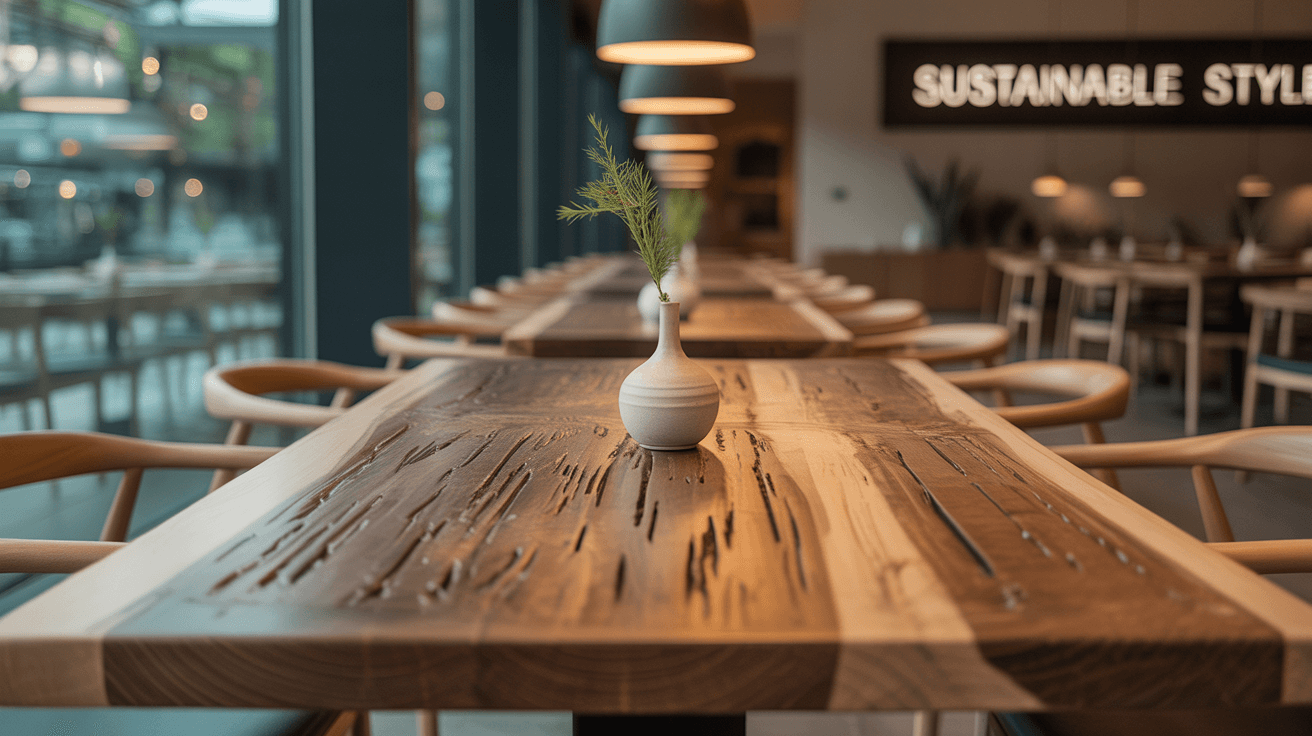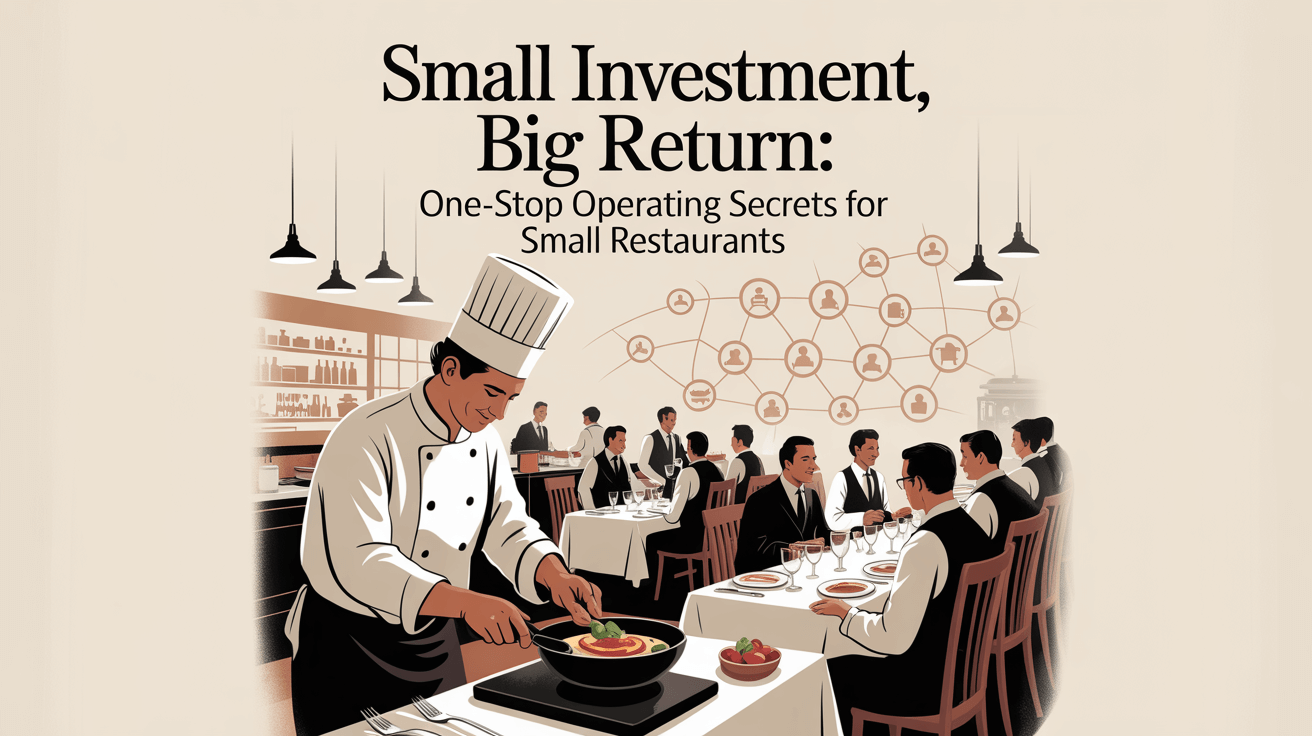Sustainable Style: Eco-Friendly Restaurant Furniture Materials You Should Know explores green options—from reclaimed to recyclable—so you furnish responsibly and impress guests. But here’s the kicker… eco choices boost brand image and cut waste.
1. What are reclaimed wood options?
● Barn-salvaged oak with rich patina
● Recycled pine planks from old structures
● Surfaced elm timbers in slim profiles
● Refinished maple beams in custom cuts
Ready for the good part? reclaimed pieces tell a story and reduce logging.
| Wood Type | Source | Sustainability Impact |
|---|---|---|
| Barn Oak | 100+-year old barns | Lowers deforestation |
| Recycled Pine | Industrial offcuts | Cuts wood waste |
2. How do bamboo and fast-growing grasses work?
● Bamboo poles for chair legs and frames
● Woven seagrass or rattan seat panels
● Engineered bamboo plywood for tabletops
● Resin-treated grass for outdoor durability
What’s the real story? these renewables mature in 3–5 years versus decades.
3. Which recycled-plastic lumbers add durability?
● HDPE slats for bench seating
● Composite planks for patio tables
● Plastic-woven wicker for chairs
● Color-through recycled resin cores
This is where it gets interesting… they resist rot and need zero varnish.
4. What metal options can be eco-friendly?
● Reclaimed steel beams cut into frames
● Aluminum offcuts remelted for legs
● Powder-coat using low-VOC finishes
● Corten steel accents for weathered look
But here’s the kicker… recycled metals use 75% less energy than new.
| Metal Type | Recycled Content | Benefit |
|---|---|---|
| Reclaimed Steel | ≥90% | Strength + character |
| Recycled Aluminum | ≥85% | Lightweight + low energy |
5. How are natural textiles integrated?
● Organic cotton or hemp slipcovers
● Wool blends in booth upholstery
● Jute or sisal weaves for decorative accents
● Linen-cotton blends resisting wear
Ready for the good part? natural fibers biodegrade after decades, not centuries.
6. What cork materials support green goals?
● Cork planks for tabletops and bars
● Cork-backed chair seats for comfort
● Natural cork wall panels for acoustics
● Recycled cork granules in composite boards
What’s the real story? cork harvest doesn’t kill trees and regrows bark.
7. Which bio-resins replace petro-plastics?
● Plant-based polyesters for chair shells
● Soy-cast adhesives in plywood cores
● Bio-epoxy finishes sealing wood grain
● Corn-starch-derived laminates on surfaces
This is where it gets interesting… bio-resins cut CO₂ by 30–50%.
| Resin Type | Base Material | Emission Reduction |
|---|---|---|
| Soy Epoxy | Soybean oil | ~40% less CO₂ |
| Corn Laminate | Corn starch | ~30% less emissions |
8. How do recycled-glass tabletops work?
● Crushed glass mixed into resin tops
● Thick tempered slabs in terrazzo style
● Embedded aggregates for visual texture
● Sealed edges preventing chips
But here’s the kicker… recycled glass saves 50% of raw material energy.
9. What rubber flooring options are eco-smart?
● Reclaimed tire rubber tiles under tables
● Vinyl floors with recycled backing
● Cork-rubber hybrids in high-traffic zones
● Latex-free natural rubber rolls
Ready for the good part? these reduce landfill waste and cushion falls.
10. What plant-based foams cushion seats?
● Soy-polyurethane seat cores
● Algae-infused memory foam toppers
● Castor-oil blend back pads
● Natural latex options for press-fit cushions
This is where it gets interesting… plant foams cut petroleum use by up to 60%.
| Foam Type | Plant Source | Petro Reduction |
|---|---|---|
| Soy PU Foam | Soybean oil | ~60% |
| Algae Memory Foam | Algal oil | ~50% |
11. How do low-VOC adhesives and finishes help?
● Water-based contact cements bonding plywood
● Low-VOC lacquers on exposed wood
● Natural oil finishes sealing stains
● Certified green seal paints on metal trims
What’s the real story? low-VOC products improve indoor air quality.
12. Which end-of-life recycling programs exist?
● Take-back schemes from manufacturers
● Local curbside collection of metal frames
● Compostable textiles in industrial compost
● Glass drop-off centers recycling tabletops
But here’s the kicker… closed-loop programs turn old into new.
13. What certifications guide eco choices?
● FSC for responsible wood sourcing
● GREENGUARD for low-emission products
● Cradle to Cradle for full-cycle safety
● ISO 14001 for environmental management
Ready for the good part? certifications guarantee verified sustainability.
14. How to vet green suppliers effectively?
● Ask for raw material origin reports
● Request carbon-footprint and LCA data
● Tour production facilities if possible
● Review third-party audit and compliance docs
This is where it gets interesting… transparency weeds out greenwash.
15. How to blend eco materials with style?
● Pair cork tables with metal chairs
● Contrast bamboo stools against reclaimed wood
● Accent hemp cushions on steel frame
● Embed glass chips in wooden bar fronts
What’s the real story? clever combos marry looks with sustainability.
Conclusion
Choosing eco-friendly materials—from reclaimed wood to bio-resins—creates stylish, durable, and planet-positive restaurant furniture. Apply these options to reinforce brand values, delight customers, and reduce your environmental footprint.
FAQ
Q1: Are reclaimed woods durable for restaurants?
Yes—properly sealed, they last decades and add authenticity.
Q2: How much can bio-resins cut emissions?
Plant-based resins reduce CO₂ emissions by 30–50% versus petro alternatives.
Q3: Do recycled-plastic lumbers fade outdoors?
High-grade HDPE resists UV fading for years.
Q4: Which certifications matter most?
FSC, GREENGUARD, and Cradle to Cradle validate true eco credentials.
Q5: Can natural textiles handle heavy use?
Organic cotton blends and wool mixes perform well when rated 30K+ double rubs.






